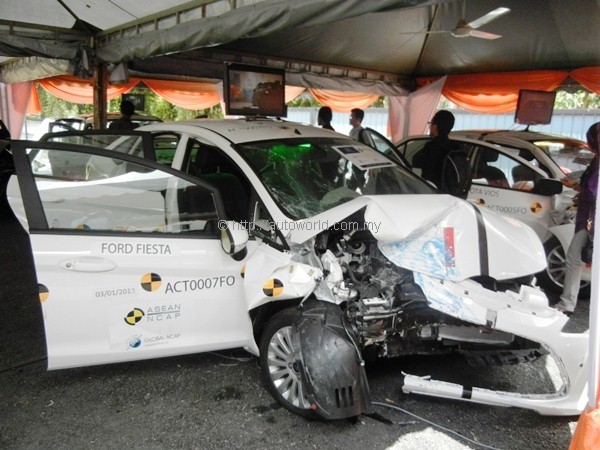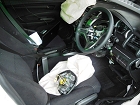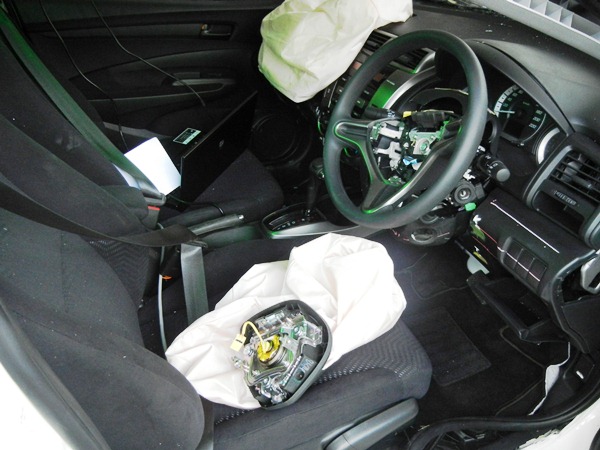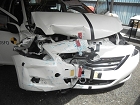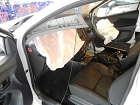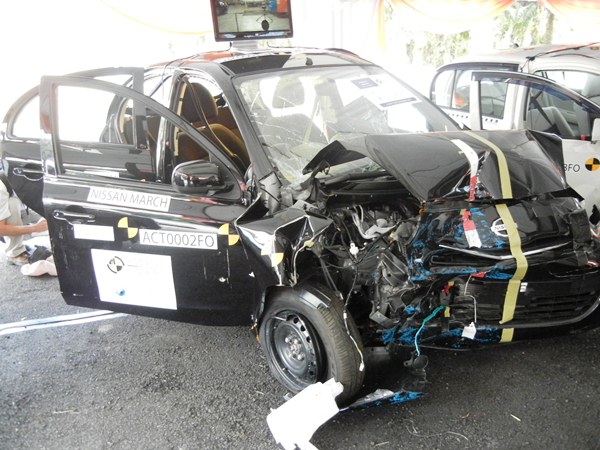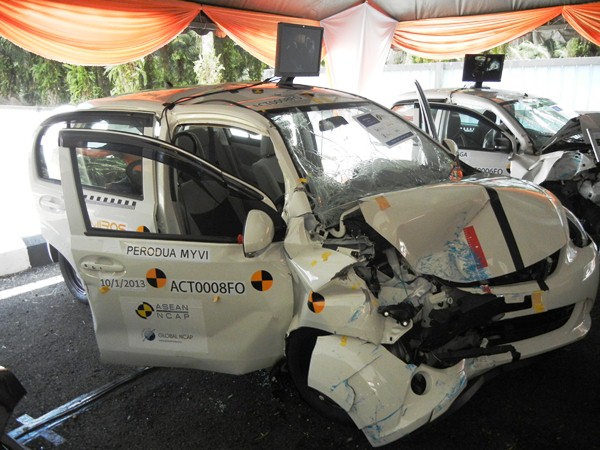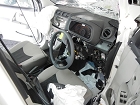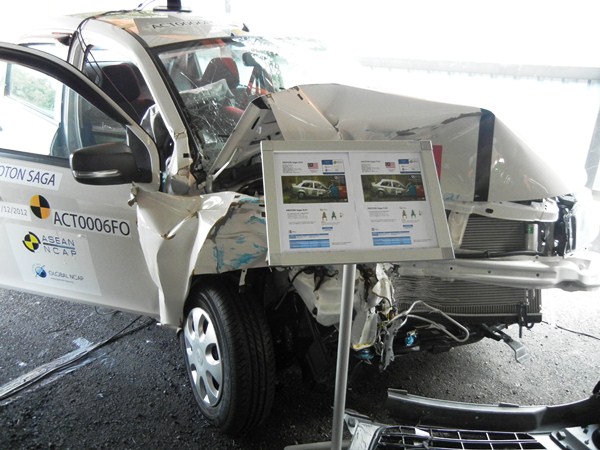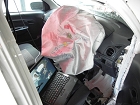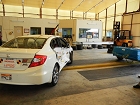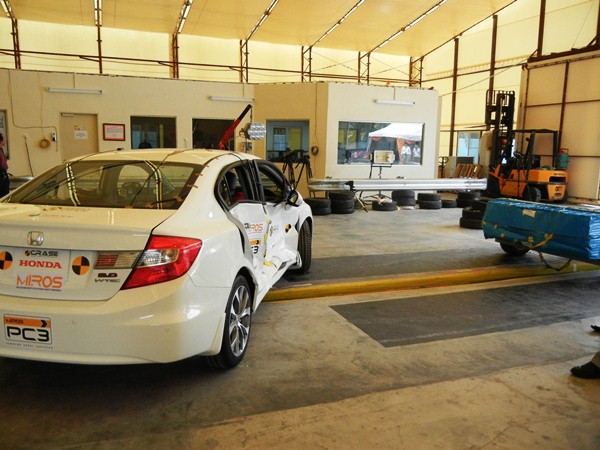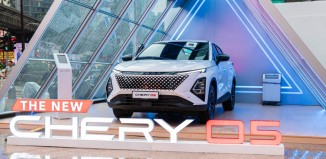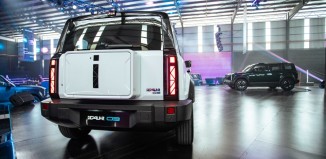ASEAN NCAP completes first phase crash testing with seven cars
The journey of a thousand miles begins with a single step, and although the fledgling ASEAN NCAP independent crash testing programme is nowhere near established equivalents from Europe, Japan, and Australia, it has taken a significant step to give the South East Asian region its very own crash testing programme that will focus on models relevant to the region.
Spearheaded by the Malaysian Institute of Road Safety (MIROS) in partnership with Global NCAP, the ASEAN NCAP recently completed its first phase of tests having evaluated the performance of seven of the region’s most popular cars when crashed against a 40% offset barrier at a constant speed of 64kph. Results of the seven vehicles were presented at the ASEAN NCAP Open Day & Side Impact Crash Test Demo held in Malacca last week.
The tests were performed at the MIROS PC3 crash test lab in Malacca, the only one in existence in this region. Planning for the lab began in early 2008 with construction commencing in January 2012. Besides using it for its own internal research and also for the ASEAN NCAP evaluation, MIROS is making the PC3 lab available for use by automotive manufacturers wishing to conduct their own crash tests for model development.
In accordance to practices by foreign NCAPs, cars tested by the ASEAN NCAP are bought from randomly selected official dealerships, and as a matter of policy, the lowest specification model will invariably be selected so that the obtained rating will be valid across the range. The other reason of course, is that the lowest spec model costs the least money, and ASEAN NCAP isn’t exactly funded by a bottomless pit of money.
Exceptions are made, however, in the event where a crash tested unit is of an obsolete specification, and the manufacturer then has the option of providing ASEAN NCAP with a vehicle of the updated spec for a repeat testing. According to MIROS Director-General Prof Dr Wong Shaw Voon, the vehicle is selected at random from a designated mass production batch by MIROS representatives who would also inspect the selected vehicle together with its batchmates to ensure uniformity.
The above scenario happened with the Proton Saga FLX, which was tested in its basic 2012 1.3S specification with one airbag. After procuring the vehicle and crashing it, ASEAN NCAP engineers were subsequently made aware that Proton is introducing a running change to make dual airbags and three-point rear centre seat belt standard on all variants of the FLX. The revised model was crashed significantly later than the other cars, and its results were thus presented as an addendum along with those of the first FLX car that was initially tested.
Each model is evaluated with only one test car, and Prof Dr Wong insists that extremely stringent control procedures are in place to ensure a high level of repeatability of the test results. In each crash test, the car is filled with four dummies – two Hybrid III 50th percentile male adults in front, a P3 three-year-old child dummy, and a P1.5 18-month-old child dummy at the back. The child dummies are placed in child restraint seats, and in the official results presentation, the specific seat model must be stated.
The vehicles are evaluated based on two scoring components – frontal adult occupant protection and child occupant production, the former given scores of zero to five stars and the latter given a percentage score. A given vehicle’s score depends almost solely on the ‘injuries’ registered by the dummies. Vehicles without electronic stability control and seatbelt reminders are limited to a maximum adult protection score of four stars.
Indeed, of the seven vehicles tested, only two met the pre-requisite for a five-star rating, namely the Ford Fiesta and the Honda City. These two models scored the highest in both adult and child occupant tests, both bagging five stars for adult protection. The City leads the way for child protection with an impressive score of 81% with Fiesta following at a distant second with 66%.
The ESC-less Toyota Vios and Nissan March scored the maximum possible four stars available to them. These two models are nevertheless lowest in child occupant protection, both scoring 48%. Although the March is currently not offered in Malaysia, its ratings are useful for us to estimate the possible scores of its platform mate, the Almera.
Also evaluated during the first phase of testing was Malaysia’s best-selling model, the Perodua Myvi, which earned a respectable three-star adult protection rating despite what appears to be very serious deformations of the A-pillar. The Myvi also excelled in child protection, its 54% score being third behind the City and Fiesta.
A shocking performer was the Hyundai i10, a supposedly Euro NCAP four-star vehicle which scored only two star for adult protection and 48% for child protection. Amongst the seven vehicles, we observed the i10 to be the only one whose dashboard was pushed into the passenger cell, potentially adding to already serious injuries being sustained by the front occupants.
The Proton Saga FLX was first tested to a one-star adult occupant protection rating and 49% child protection rating. Its scores improved substantially with the second test in the updated unit, which scored three stars for adult protection and an impressive 58% for child protection, elevating it above the Myvi.
Moving forward, the ASEAN NCAP is ready to commence its second phase of testing in the second quarter of 2013.





